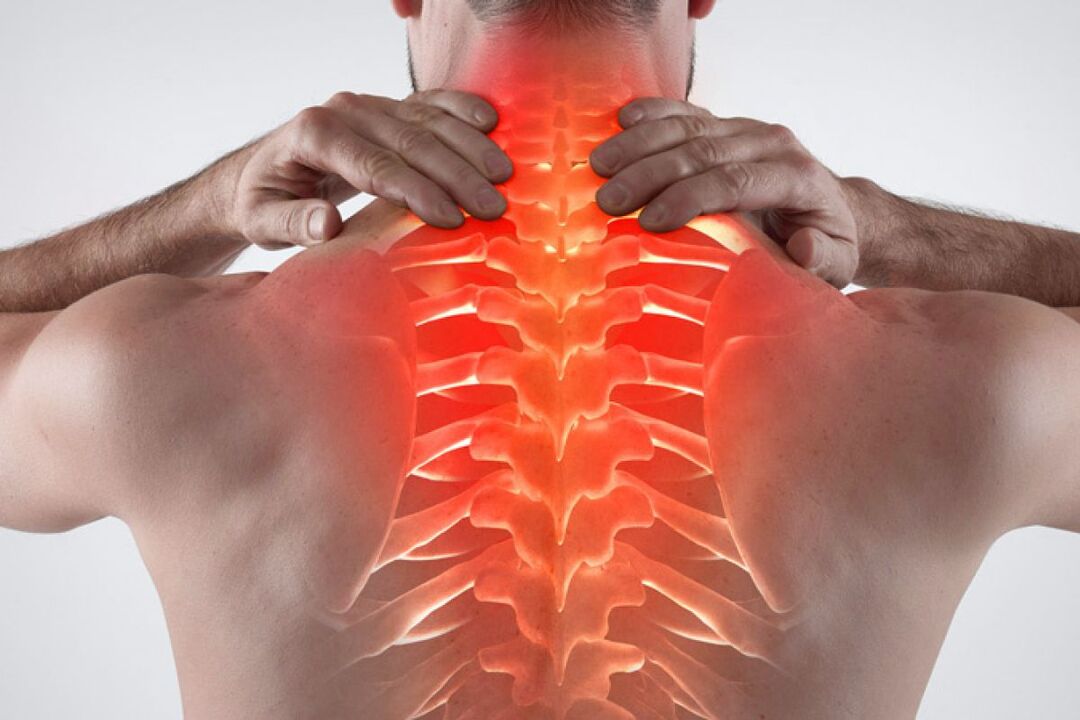Dystrophy as well as degenerative processes in the human spine usually lead to the appearance of a disease such as osteochondrosis. This pathology can affect a segment of the spine or the entire spine. Some parts of the spine are affected more often, others less frequently.

In the thoracic region of the spine, the performance of the vertebrae is different, larger than others. In addition, there is less mobility at this stage of the spine, less strain, and the muscles support the skeleton perfectly.
Defeat of osteochondrosis of the thoracic area is much less frequently diagnosed. This pathology usually has similar manifestations to the symptoms of many diseases and is classified by grade depending on the level of destruction of the intervertebral discs.
Grade 1 chest osteochondrosis: symptoms
In patients with early stages of thoracic osteochondrosis, the elasticity of the intervertebral discs is reduced. Possible protrusion of the fibrous ring.
In the initial stages of the disease, the following symptoms are observed:
- the patient suffers from sharp penetrating pain. Occurs after physical activity, exercise, or lifting heavy objects. The pain is accompanied by aching, constant, not intense, lumbago;
- under high load, an unexpected rupture of the capsule occurs in the intervertebral disc and cracks occur. As a result, the nucleus penetrates the cracks, irritating the nerves in the spinal column;
- this degree of disease occurs with pronounced muscle tension. As a result, the space in the intervertebral discs narrows more and the pain increases.
Chest osteochondrosis can cause pain in the heart, digestive tract, and kidneys. At this stage of the disease, the signs clear and are difficult to diagnose.
Treatment of osteochondrosis of grade 1 thoracic spine
It is easier to treat in the early stages of osteochondrosis of the chest. The treatment of the disease is aimed at eliminating the manifestations of the disease and curing the rupture of the sheath.
Because there are inflammatory processes in the tissues that cause severe pain, treatment is started in the form of a painkiller or injection.
To relieve cramps and increase blood flow, medications are prescribed in the affected section of the spine to help dilate the vessels. Daily intravenous administration of sodium chloride helps to relieve swelling. The duration of such therapy is 5 days.
In addition, chondroprotectors are prescribed for treatment. These drugs act on the affected areas and help tissue recover.
To stop inflammation, doctors often prescribe non-steroidal anti-inflammatory drugs. However, it should be recalled that the use of these drugs may exacerbate the course of pathologies of pre-existing chronic diseases, especially the gastrointestinal tract. Therefore, the duration of taking non-steroidal medications should not exceed 10 days.
All medicines should only be prescribed by a doctor. In order to achieve positive results, the patient should strictly follow all the recommendations of the doctor: the dosage, the time of taking the drug and the duration of treatment.
All medications prescribed for treatment can be classified as:
- antihistamines;
- non-steroidal anti-inflammatory drugs;
- vasoactive agents.
The patient is advised to have a one-month bed rest, it is advisable to undergo physiotherapy procedures.
For preventive purposes, it is important to highlight the spine. You do not need to go to the gym for this. There is always a suitable horizontal bar on each sports field. It is recommended to hang out for a few minutes once a day. This procedure helps relieve tension in the intervertebral discs in all zones of the spine.
Osteochondrosis of the thoracic spine 2 degrees: symptoms
If the disease is not revealed at the early stage and treatment is not started, the disease progresses to grade 2. With this pathology, the elasticity of the intervertebral discs decreases later, a hernia may develop, and a narrowing of the intervertebral foramen may be observed. The second stage of the disease is characterized by neurological syndrome as well as painful feelings.
This stage of spinal disease is difficult to diagnose and is associated with symptoms similar to a heart attack, angina pectoris, or pneumonia.
The following signs of grade 2 osteochondrosis of the chest should be highlighted:
- constant pain in the affected area;
- arterial hypotension is observed;
- the unnatural mobility of the spine appears;
- thinning of the capsule increases joint mobility;
- scoliosis develops due to spinal instability;
- the vessels of the spinal cord are gradually affected.
Pain in grade 2 chest osteochondrosis:
- in the chest. Such pains worsen after a long stay in one position;
- in the interscapular zone of the back;
- by deep breathing or exhalation;
- when turning and tilting the body, raising the arms.
With this pathology, there is a feeling of tightness in the sternum as well as a feeling of stiffness.
2 degrees of the disease can occur with intestinal pathologies, shortness of breath. The patient complains of peeling skin, headache and pain in the heart region.
This pathology can last for years, with alternating periods of exacerbation and remission.
Treatment of grade 2 chest osteochondrosis
The disease requires urgent complex treatment. Your doctor will prescribe anti-inflammatory medicines to relieve the pain. In order for the therapy to be effective, manual therapy sessions as well as massages are prescribed. These procedures improve the blood supply to the spine.
Timely treatment can significantly slow down the pathological processes in the spine and, in some cases, completely stop the development of osteochondrosis.
Chest osteochondrosis of the spine is often confused with cardiac pathologies or other diseases. When the first manifestations appear, a doctor should be consulted for the differential diagnosis of osteochondrosis from various diseases and for the appointment of effective treatment.

















































